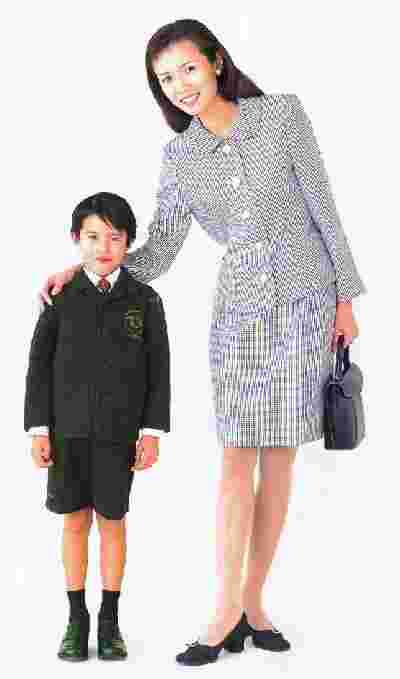
Figure 1.--This boy wears a dark green suit. The jacket has a ver small, high cut lapel with side patch pockets and a crest giving it a blazer look.

Figure 1.--This boy wears a dark green suit. The jacket has a ver small, high cut lapel with side patch pockets and a crest giving it a blazer look. |
Japanese department store catalogs, like those from other countries,
provide many useful details about popular boys' fashions. Unlike
fashion magazines, the department store catalogs provide information
on fashions often selling. The fashion magazines sometimes provide more
fanciful information about fashions that designers and mothers would like
for their boys rather than what was actually worn. These fashions are being marketed in the Tokyo area. Tokyo fashions of course are very important in setting national fashions.
It is critical in Japan for even elementary-age school children to get
into the right school. Once accepted, the parents want to make a good impression
when their children begin school. Department stores assist parents
in making a good impression hold fairs to help them choose the
appropriate fashions. This does not mean just the child's
clothes. The parents need to carefully consider the clothes worn
by the entire family. Many department stores participate in fairs showcasing boys, girls, and adult fashions. These help the parents to both prepare for interviews at the schools and,
once selected, the entrance ceremonies.
When a boy eters his new school at about age 6 years, there is a formal ceremony
attended by the parents. The suits pictured here were being marketed as
suitable for the entrance ceremony. It is entitled "The book for the new elementory school children". These department store publicatins are very helpful in
trying to assess fashion trends, especially school fashions.

Figure 2.--This was one of the boys' suits recommened by a department store for an all-imprtant school interview. Almost all department stores recommend short pants suits. |
There are images and prices on it, but little texrt. It's a free pamphlet
and it's common for this kind of pamphlet to have no text for advice.
In booksotores, there are several books for the entarance exams of
famous elementry schools, and in them there are some advice for
the fashion of entrance interview. That is almost same as in 1991.
Parents generaly buy boy's suits only for the elementry school interviews
and school entarance ceremony. The fashions show here are from a pamphlet distributed at a Tokyo fair.
The 1999 styles pictured clearly show that elementary boys still dress up in short pants
suits. There are no long pants suits show, despite the fact that Japanese boys in the
late 1990s are inceasingly wearing long pants. Long pants suits, however, are still not
deemed approprite for elemenyary school boys.
While selentary boys are still wearing short pants suits, there have been notable
changes in the styles worn during the 1990s.
The most significant change in the late 1990s fashions is the length of shorts.
The magazine issued this year for the mothers having 6-year-old children
said, "short shorts ... which worn by boys
2 or 3 years ago are not cool now. Gurkha length shorts are
recommended." Note that this commment is not for the school interview but for general
trend in boy's fashion.
There have also been changes in the style of the jackets. The standard single breasted
suit with traditional lapels is still the most common style. However I note several non-
traditional jackets that appear to look more like jackets ratherv than suit coats. The
outfits seem to have colars rather than lapels.
One HBC conrtibutor reports that, "I'm not surprised that the
department store is specifically advising mothers to dress their sons in
gurkha-length shorts. So-called gurkha shorts, named for the uniformed
shorts that soldiers from the Gurkha tribe wore in British India --
another example of how shorts got their start as men's wear, not boy's
wear--were the first non-athletic shorts here to be widely worn and
popular among college-age boys and young men in their late teens and early
twenties." The longer shorts fashion started about 1980, but was strictly
older boy/young man wear, not primary school boys. A Japanese observer reports,
I remember a college fashion magazine in 1981 suggesting that the fashionable college boy should have a pair or two. They are knee length, cuffed, tight around the waist
and rather wide around the knee.
The various Japanese terms for different
styles of shorts are: Japanese people are very concerned that they
not stick out, so department stores regularly advise their customers on
what is being widely worn. A mother might not realize, particularly if
the boy is her oldest child, that the short-shorts style is disappearing
(after all, it prevailed for a good 35 years), and that her son
might get teased if he showed up in school dressed that way.
I am not sure what age boys wear short pants suits. In the past, most elementary school boys wore short pants suits, but most switched to long pants when they graduated to junior high school at about 13 years of age.. Virtually all younger elementary boys still wear them.
I am not sure, however, if older elementary boys continue to wear them.
Some aspects of the fashions recommended by this department store would be: While no text is available, an examination of the styles portrayed, does offer
some guidelines. The 1999 school fashions for prestious private schools show cased quite a
range of suits. All are still short pants suits.
The first image shows a boy wears a dark green suit. The jacket has a very small, high cut lapel with side patch pockets and a crest giving it a blazer look. He has a long sleeved white
shirt which he wears with a bright red and yellow tie. The rather baggy short pants are
worn at knee length with short black socks and shoes.
One one of the short pants suit has the shorter style short pants formerly worn by
Japanese boys. This boy wears a conservative blue suit with normal lapels, two brass
bttons, and a decorative crest. The crest is nerely decorative and is not a school crest.
He wears a white, longs sleeved shirt and blue and green bowtie. He has short white
socks and black lace up shoes.
This boy wears a light blue, summer short pants suit. It matches a dress
which could be bought for his sister. The shorts are worn at the new knee-length
sytle. The shorts are very long, but nicely tailored. He wears white ankle socks and black loafers.
He wears a dark blue shirt for contrast with an even darker blue tie.
This boy wears a conservative two button navy blue jacket with knee-length
short pants and kneesocks. Again the short pants are long, but nicely tailored. He wears a conservative tie and natty matching hankerchief.
Unlike most of the other outfits pictured, this boy wears kneesocks rathr than ankle
socks. Like the other boys, he wears black shoes like the other boys.
This boy wears a grey double-breasted suit with long, cuffed short pants. The short
pantss are quite long, coming to mid-knee. He wears a pastel colored tie with a
conservative rep tie. He has grey ankle socks with white stripes at the top which he
wears with black loafers.
This boy wears a rather non-traditional suit. Rather than lapels the jacket had
modified sailor styling, not often worn by boys. It has three buttions rather than the
more common two buttons on boys suits. The grey suit is accented with
black stripes. Although it is not clear from the image, he is wearing a normal
necktie. His short pants are quite long and rather baggy. They are worn with plain grey ankle socks
and black lace up shoes.
This image is not yet uploaded.
Navigate the Boys' Historical Clothing Web Site: Navigate the Boys' Historical Clothing Japanese pages:
Styles
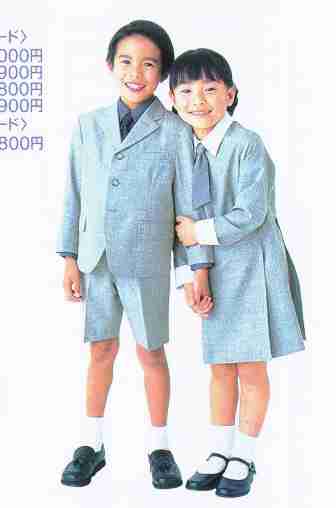
Figure 3.--This boy wears a light blue, summer short pants suit. It matches a dress
which could be bought for his sister.
Gurhka shorts: Already explained.
Gobatake: Baggy, knee to below the knee.
Hanzubon: This literally means, half-pants. They are traditional snug,
short, short pants (usually implies young boys' shorts only).
Shottsu: The English term shorts can be used to cover all these varieties
and is the generic term for any shorts worn by men.
Shotto pantsu: I believe that the english term short pants usully refers to
women's shorts although I'd want to check with a native speaker.
Pantsu: Pants said alone mean underwear, i.e., the way the British use the word.)
Zubon: Means trousers (American pants), thus han (Japanese word for half)
zubon for proper short pants as explained above.
Ages
Suit:
Blazer:
Shirt:
Tie:
Short pants:
Socks:
Shoes:
Suit: The rather standard sinle breasted suits of the early 1990s are now more diversified. The single breasted style is still the most popular.
Not only are there more different colors, but also differently styled jackets. Non
of the boys wear the lapelless Eton jackets that were still seen in the early
1990s. Several of the suit jackets look more like informal jackets rather than
traditional suit jackets. There is also one double breasted jacket shown.
Blazer: A blazer has a somewhat different meaning in Japan, merely signifying
a jacket with different colored pants.
Shirt: White shirts continue to be the most popular. Boys are not restricted, however, to white shirts. Some boys wear colored shirts, both light and dark colors. All of the
jackets appear to have two buttons. Note that all of the shirts have standard
soft collars. I don't think that there are any button-down collars. None of the
boys wear Peter Pan collars like small American boys used to wear. Prter Pan collars,
however, appear popular for the girls.
Tie: Both neckties and bowties are worn. They are more varied than the ties worn in the early 1990s, but still basically conservative. Rep ties are still very popular.
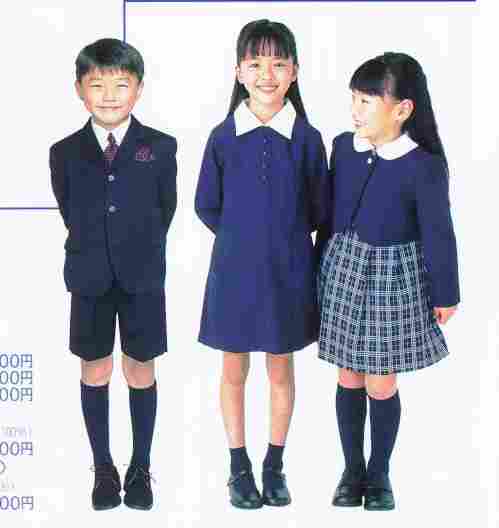
Figure 4.--This boy wears a conservative two button navy blue jacket with knee-length
short pants and kneesocks. He wears a conservative tie and natty matching hankerchief.
Pants: All of the boys suits are short pants suits. The department stores
obviously believe that it is still important for boys to wear short pants suits
rather than long pants suits to make a good impression at a school interview. Short
pants with cuffs, another European import, appear to be very popular. I'm not sure
about the style of the shorts. I think that many are suspender shorts.
Socks: Both white and dark ankle socks are worn, but patterned socks are also available. Kneesocks are also worn, but ankle socks appdear to be more common. The knee socks are
always neatly pulled up. They are generally the plain color style without colored tops are
turn over tops. One boy, however, wears short grey ankle socks with white stripes.
Shoes: All of te shoes are black leather shoes, both lace up shoes and loafers. Loafers appear to be quite acceptable even for formal wear. Notably, one European
style which was not imported was English school sansals (closed toe "T" strap shoes).
Suits Portrayed
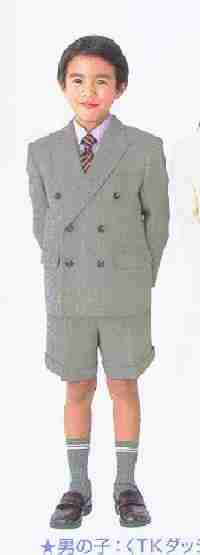
Figure 5.--This boy wears a grey double-breasted suit with long, cuffed short pants. Note
the conservatibe rep tie and the white tripes onthe matchin grey ankle socks.
Suit One
Suit Two
Suit Three
Suit Four
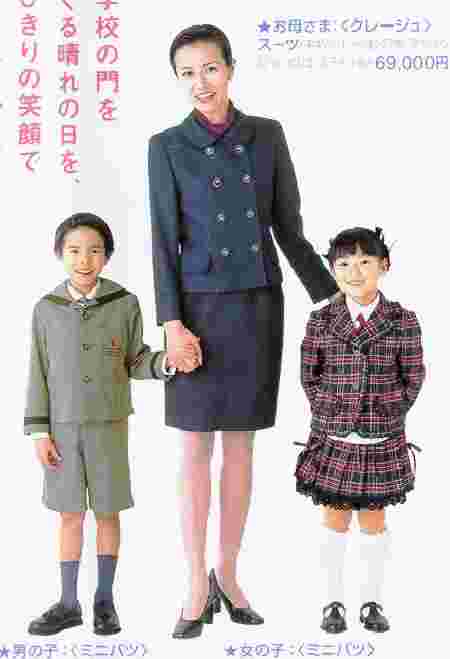
Figure 6.--This boy wears a non-traditional suit. Rather than lapels the jacket had
modified sailor styling, not often worn by boys.
Suit Five
Suit Six
Suit Seven
Christopher Wagner
[Introduction]
[Chronology]
[Clothing styles]
[Biographies]
[Bibliographies]
[Contributions]
[Countries]
[Boys' Clothing Home]
[Return to the Main Japanese page]
[Return to the Maon Japanese department store catalog page]
[Japanese school uniforms]
[Japanese choirs]
[Japanese monarchy]
[Japanese Scouts]
[Japanese recitals]
Created: June 18, 1999
Last updated: July 25, 1999